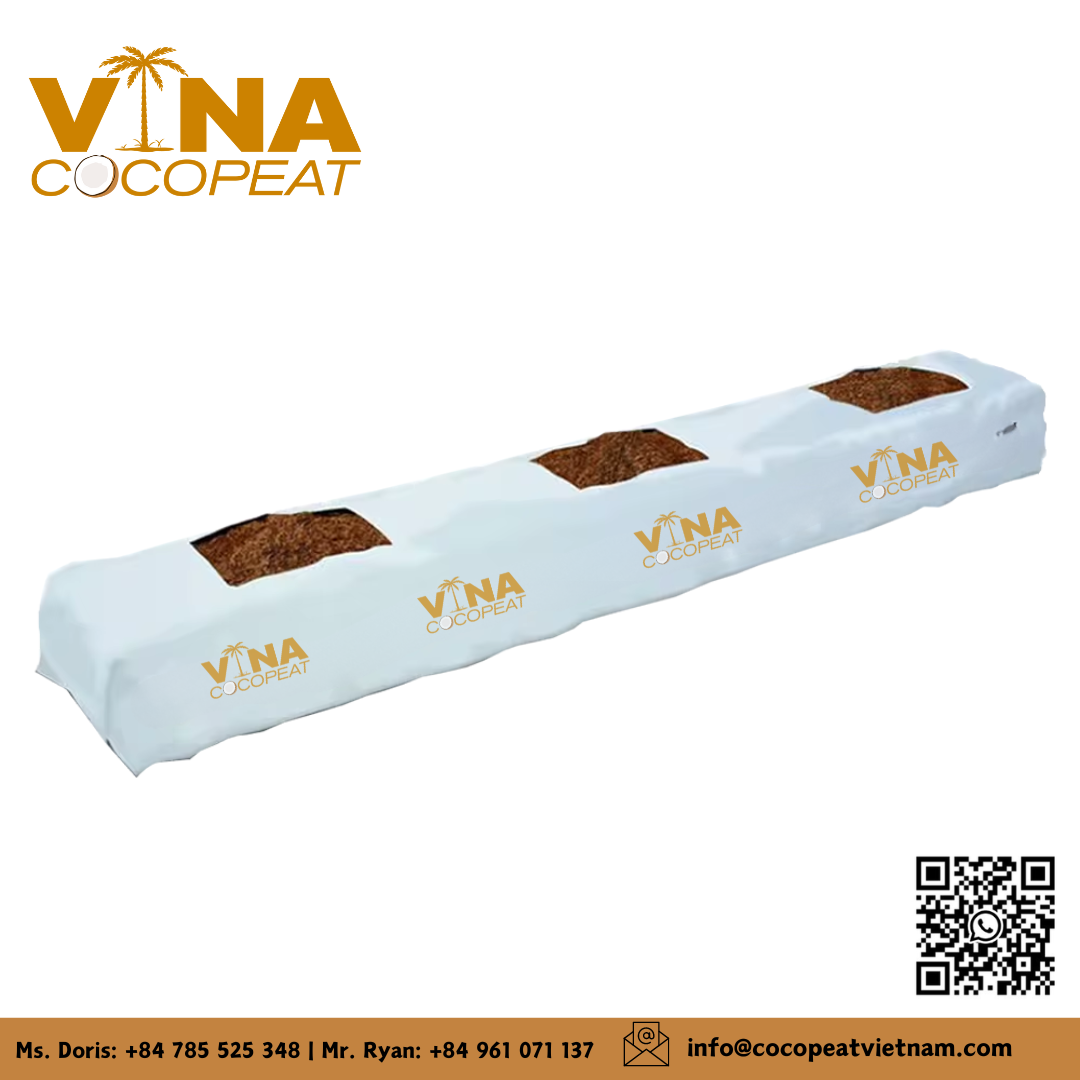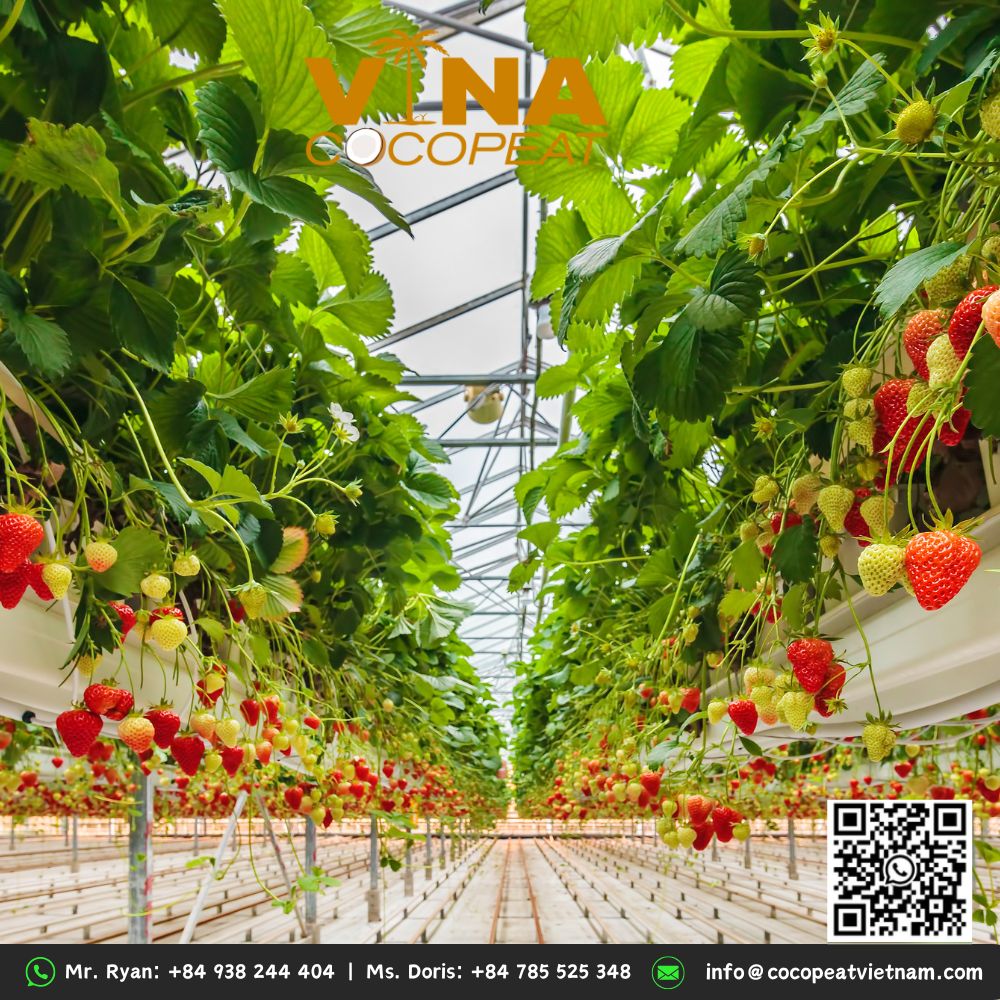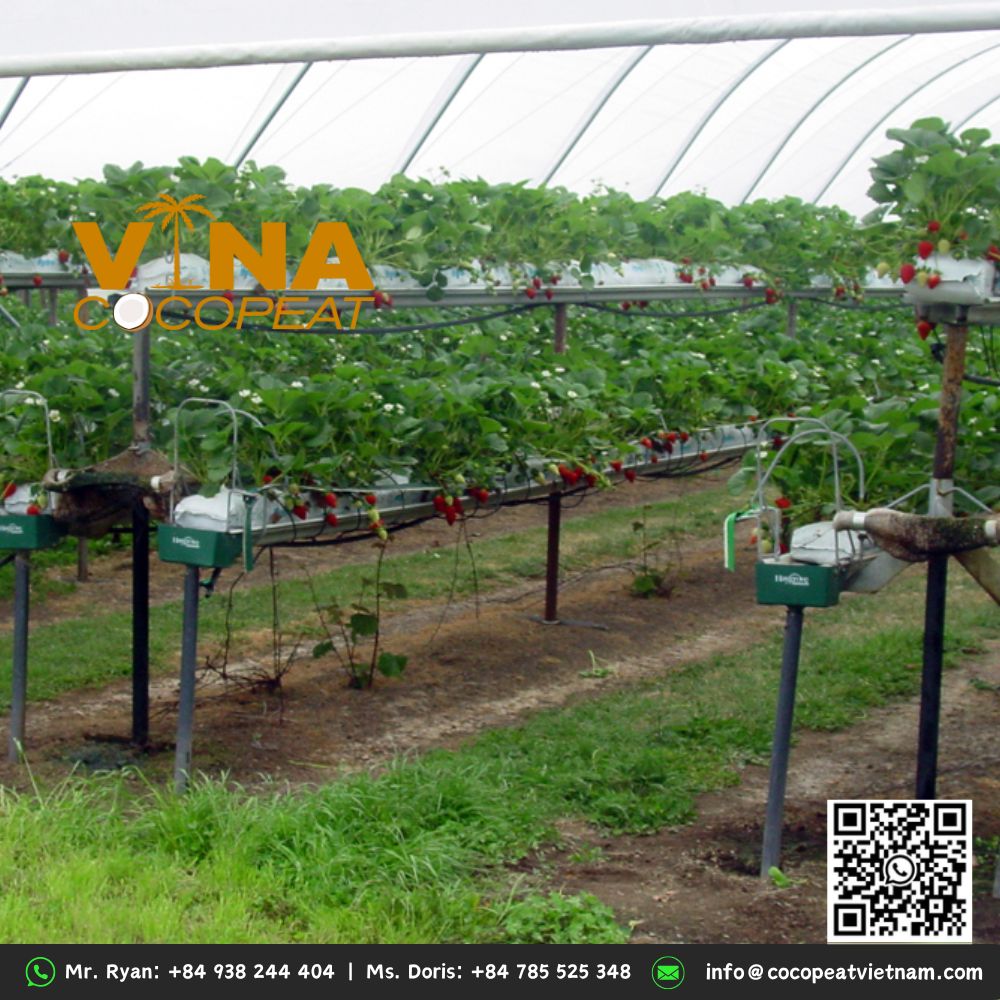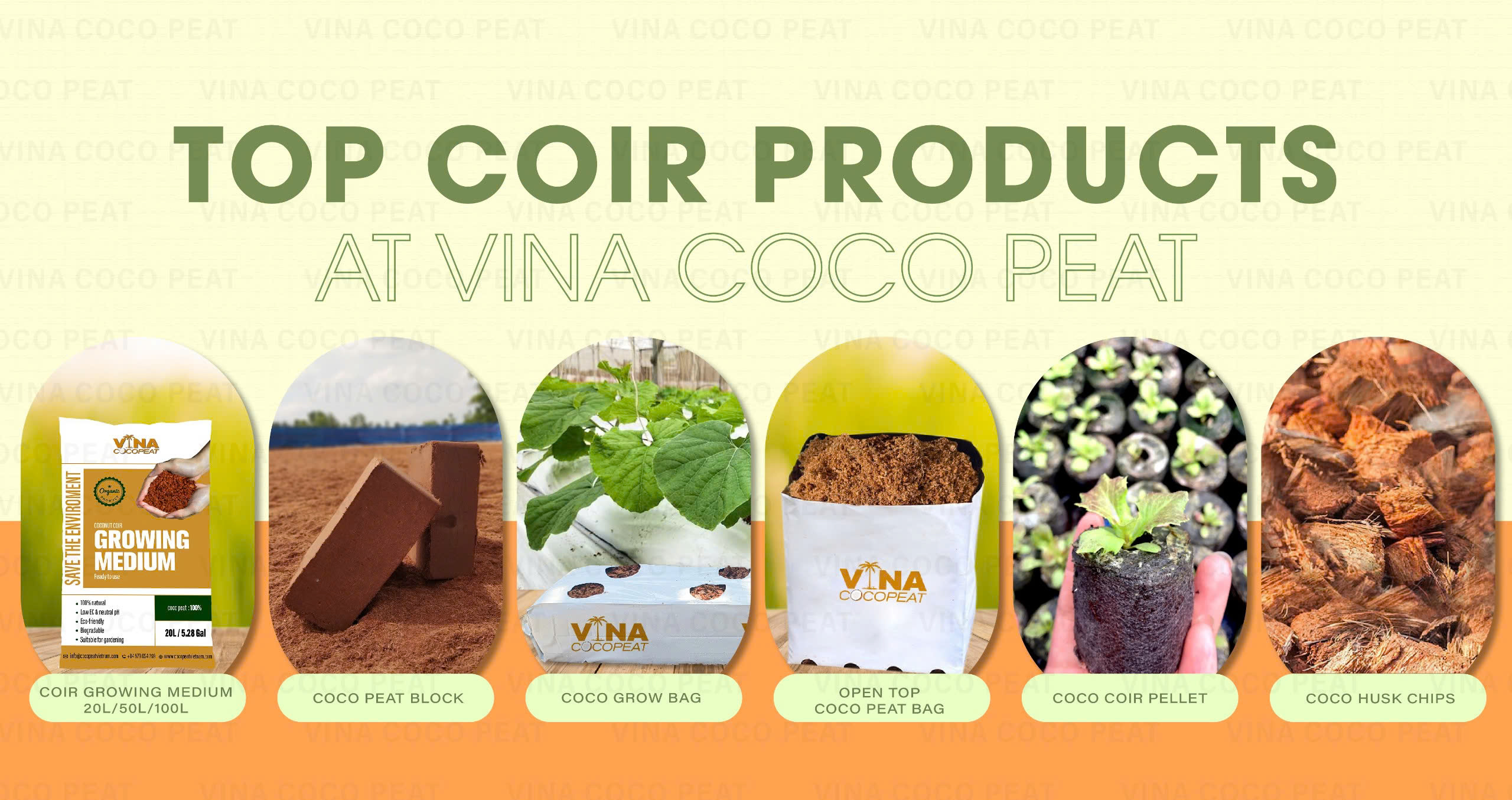Strawberry is a popular fruit noted for its sweetness and adaptability, appearing in everything from breakfast to dessert. Traditionally grown in soil, strawberries are now increasingly being grown in hydroponic systems, which provide greater control over nutrients and growing conditions. Coco peat, made from coconut husks, is a renewable hydroponic substrate that has shown great promise. This blog post explains how to grow hydroponic strawberries with coco peat slabs and vertical gardening systems.
Coco peat slabs are ideal for growing strawberries, particularly in controlled situations such as greenhouses or hydroponic systems. They create a balanced environment for root development, ensuring proper water retention and aeration.

Why Coco Peat Slabs are Ideal for Strawberries
1. Optimal water retention
Why this matters: strawberries require consistent moisture to grow healthy roots and yield luscious fruits. Coco peat slabs have high water retention properties, allowing plant roots to remain hydrated for extended periods without becoming saturated.
Benefit for strawberries: Coco peat evenly distributes moisture throughout the slab, lowering the risk of submerging yourself or overwatering, which is critical for strawberry growth and fruiting.
2. Good aeration
Why this matters: Proper root aeration is necessary to prevent root rot and promote healthy root growth. Coco peat’s structure allows for good air circulation around the roots.
Benefits for strawberries: Coco peat’s fibrous texture creates air spaces that allow strawberry roots to “breathe,” which results in more strong and robust plant growth.
3. Neutral pH level
Why this matters: Strawberries prefer a pH ranging from slightly acidic to neutral (5.5 – 6.8). Coco peat slab has a neutral to slightly acidic pH (5.5-6.8), making it an excellent substrate for strawberries.
Benefit for strawberries: Coco peat slabs’ ideal pH level creates a balanced environment for strawberry plants, avoiding the need for large pH modifications.

4. Good drainage
Why this matters: strawberries are susceptible to root infections brought on by wet circumstances. Coco peat has great drainage capabilities, so excess water runs through without generating stagnant water.
Benefit for strawberries: Coco peat keeps the roots from becoming wet, lowering the danger of fungal illnesses such as root rot, which can be harmful to strawberries.
5. Sustainable and environmentally friendly
Why this matters: Coco peat is made from coconut husk, making it a sustainable and biodegradable resource. It is also an environmentally friendly alternative to peat moss, which is less sustainable.
Benefits for strawberries: Using coco peat encourages the preservation of the environment, making it a responsible choice for environmentally concerned strawberry farmers while also offering an excellent growing medium.
6. Pest and Disease Resistance
Why this matters: Coco peat is naturally resistant to pests and pathogens because of its organic structure and antifungal qualities.
Strawberry benefits include resistance to common pests transmitted by the and illnesses, which reduces the need for chemical treatments and keeps strawberries healthier and more organic.
7. Easy to Use in Hydroponics and Greenhouse Systems
Why it matters: Coco peat slabs are commonly used in hydroponic and greenhouse systems due to their ease of installation, maintenance, and management. They come in pre-formed slabs or grow bags, making the cultivation procedure easier.
Coco peat slabs are beneficial to commercial strawberry growers because they enable efficient water and fertilizer delivery in regulated settings, hence increasing productivity and quality.

8. Nutrient holding capacity (CEC)
Why this matters: Coco peat has a high cation exchange capacity (CEC), allowing it to store and gradually release nutrients to plants.
Benefit for strawberries: This slow nutrient release guarantees that the strawberry plants receive a consistent supply of critical nutrients, resulting in improved development and fruit yield.
9. Lightweight and easy to handle
Why it matters: Compared to traditional soil, coco peat slabs are lightweight, portable, and quick to put up.
Benefit for strawberries: Coco peat slabs’ lightweight nature makes them perfect for both small-scale and commercial strawberry production, particularly in vertical or container systems.
10. Reusable and Permanent
Why it matters: If properly managed, coco peat slabs can be reused for numerous growing cycles, decreasing the need for regular replacements.
Benefit for strawberries: For long-term strawberry cultivation, coco peat slabs are cost-effective since they may be reused over numerous seasons without losing their beneficial characteristics.
Key Types of Coco Peat Slabs for Strawberry Cultivation
-
Buffered Coco Peat Slabs
- Why it’s good: Buffered coco peat has been pre-treated to eliminate excess salts, guaranteeing that the medium does not injure the delicate roots of strawberry plants. It maintains a constant pH and EC (electrical conductivity) to promote development.
- Best for: Hydroponic or containerized strawberry cultivation, where the farmer desires greater control over nutrient management.

-
Compressed Coco Peat Slabs
- Why it’s good: Compressed slabs are highly compacted for easy storage and transportation. When hydrated, they expand significantly and can provide a large volume of growing media.
- Best for: Growers with limited storage space or who want to transport slabs over long distances.

-
Coco Peat and Coco Husk Chips Mix Slabs
- Fine coconut coir particles are noted for their superior water retention and moisture management. Larger, chunkier bits of coconut husk improve drainage and aeration.
- This regulated water retention and drainage is ideal for strawberries, which require continuous hydration but can suffer from waterlogged roots.

How to use coco peat slabs for strawberries
- Hydration: Before planting, moisten the coco peat slabs so they can fully expand. Make sure they are evenly moist but not too saturated.
- Planting: Make cuts or holes in the slab to plant the strawberry runners or seedlings. Space the plants according to the specified distance.
- Irrigation and Fertilization: To keep consistent hydration, install a drip irrigation system or water the plants by hand. Regular fertilizing may be required, particularly in hydroponic systems.
- Maintenance: To avoid waterlogging, provide proper drainage. After the growing season, replace the slabs as needed, especially if they are reused for many crops.
VINA COCO PEAT – THE MULTIPLE COCO PEAT PRODUCTS
VINA COCO PEAT could be a strong supplier choice for high-quality coco peat slabs, especially tailored for strawberry cultivation. VINA COCO PEAT would likely offer a range of coco peat products, including options like coco peat and husk chip mix slabs, to meet the specific needs of growers.

If you are looking for detailed information about our product specifications, pricing, or how they support strawberry cultivation, please contact us to know more details.
Ms. Doris: +84 785 525 348 (ZALO, WHATSAPP, WECHAT, LINE)
Mr. Ryan: +84 961 071 137 (ZALO, WHATSAPP, WECHAT)
한국 영업 담당자: +84 969 273 598 (Ms. Lan)
中文: +84 397 317 401 (Ms. Vi)
Email: info@cocopeatvietnam.com – www.cocopeatvietnam.com
